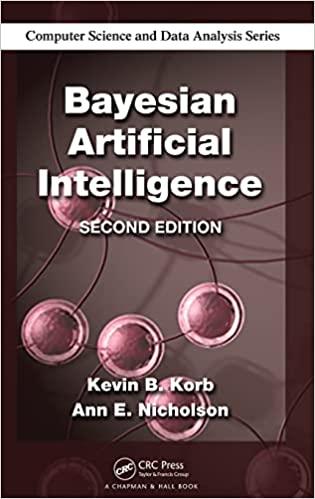Consider the BNs for the Asia problem described in x2.5.3. 1. Use the Jensen junction tree algorithm
Question:
Consider the BNs for the “Asia” problem described in x2.5.3.

1. Use the Jensen junction tree algorithm (Algorithm 3.2) to construct a junction tree from both these networks, drawing (by hand) the resultant junction trees.
2. Load these networks (asia1.dne and asia2.dne in the on-line material)
into Netica.
(a) Compile the networks using standard Netica compilation.
(b) Inspect the junction tree by selecting Report!Junction tree menu option, and note the elimination ordering (used in Netica’s junction tree algorithm) by selecting Report!Elimination Ordering menu option.
How do the junction trees produced by Netica compare to the ones you computed using Algorithm 3.2? What are the junction tree costs of each?
(c) Re-compile the networks using the Network!Compile Optimizing menu option. Inspect again the junction trees and the elimination orderings.
How much do they differ?
3. Now load the Hugin versions of these networks (asia.net and asia2.net in the on-line material), and compile them with varying settings of the triangulation heuristic. (See A Quick Guide to Using Hugin in Figure 2.11.)
(a) Clique Size
(b) Clique Weight
(c) Fill-in Size
(d) Fill-in Weight
(e) Optimal Triangulation How do the resultant junction trees differ in structure and corresponding junction tree cost
(a) From each other?
(b) From the those you obtained executing the algorithm by hand?
(c) From those obtained from Netica’s standard and optimized compilation?
Step by Step Answer:

Bayesian Artificial Intelligence
ISBN: 9781439815915
2nd Edition
Authors: Kevin B. Korb, Ann E. Nicholson






